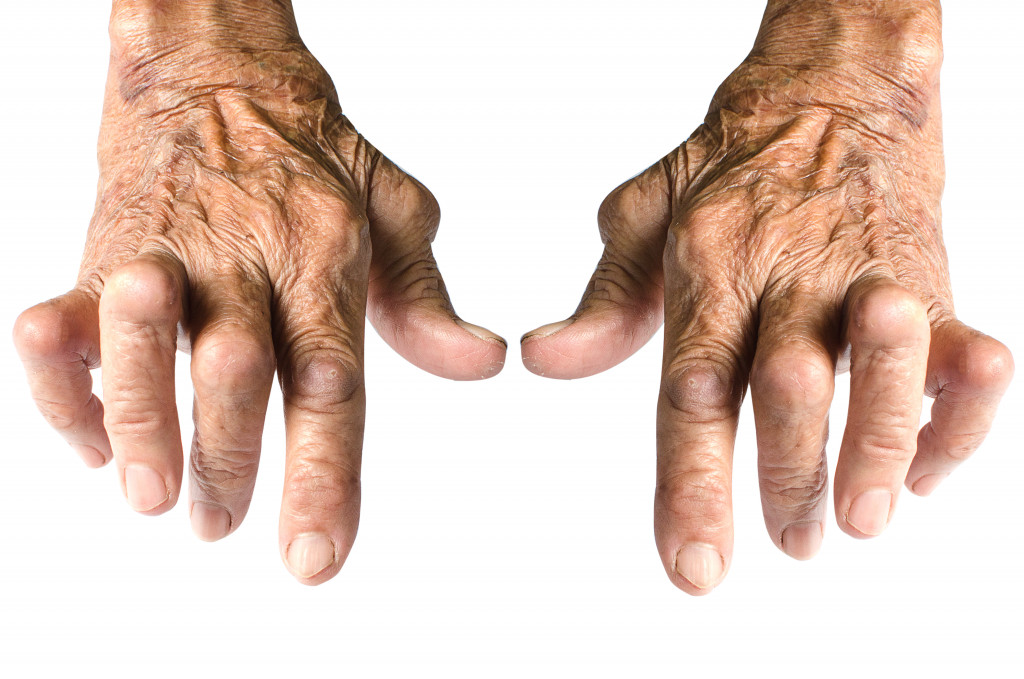• Rheumatoid Arthritis (RA) is an autoimmune disorder that causes pain, stiffness & swelling in body joints.
• Symptoms of RA include joint pain/stiffness, fatigue, fever, decreased range of motion & swelling/redness in affected joints.
• Risk factors for RA include genetics, age/gender, smoking, obesity & certain infections.
• Treatment options include pain treatment, medications (NSAIDs/DMARDs/corticosteroids) & surgery in severe cases.
• Understanding risk factors and treatments can help you take control of your health if you have rheumatoid arthritis.
Rheumatoid arthritis (RA) is an autoimmune disorder affecting millions worldwide. It is a chronic condition that can cause pain, stiffness, and swelling in various body joints. Currently, it’s one of the most common forms of arthritis and one of the most debilitating. Here’s everything you need to know about it.
What is Rheumatoid Arthritis?
Rheumatoid arthritis is a chronic autoimmune disease where the body’s immune system mistakes its healthy joints for foreign invaders and attacks them. This autoimmune response leads to inflammation that can eventually cause damage to the bones, cartilage, and ligaments around the joints of the body. The joints most commonly affected by RA are the hands, feet, wrists, and knees.
Symptoms of Rheumatoid Arthritis
The symptoms of Rheumatoid arthritis can vary in intensity from mild to severe. The most recognizable symptoms are joint pain and stiffness, especially in the morning or after sitting for long periods. Other common symptoms include fatigue, low-grade fever, decreased range of motion, and redness or swelling around the affected joints. RA also affects other body organs like the eyes, lungs, heart, and blood vessels.
Who Does it Affect?
Rheumatoid arthritis can affect people of any age, but it is more prevalent in women than men. Here are the other risk factors for RA:

Genetic Factors
Research has shown that genetics can play a role in rheumatoid arthritis. If you have a family history of the disease, you are more likely to develop it yourself. The presence of certain genes can increase the risk of developing rheumatoid arthritis, even if you do not have a family history. However, having these genes does not necessarily mean you will develop rheumatoid arthritis. If you have a family history or suspect you may be at risk due to genetics, speak with your healthcare provider to learn more about managing your risk.
Age and Gender
Rheumatoid arthritis can affect people of all ages, but it most commonly develops in individuals between 40 and 60. It is also three times more likely to affect women than men. While age and gender cannot be modified, knowing your risk based on these factors can help you and your healthcare provider develop a plan for early detection and treatment.
Smoking
If you smoke, you are at a higher risk of developing rheumatoid arthritis. Studies have shown that smoking can cause changes in the immune system, increasing the likelihood of developing autoimmunity. Smoking also increases inflammation throughout the body, which can exacerbate the symptoms of rheumatoid arthritis. Quitting smoking can reduce the risk of developing rheumatoid arthritis and improve overall health.
Obesity
Obesity is associated with a greater risk of developing rheumatoid arthritis. Excess fat tissue can lead to low-grade inflammation throughout the body, triggering an autoimmune response. Additionally, the extra weight stresses the joints, increasing the likelihood of joint damage and arthritis. Maintaining a healthy weight through a balanced diet and regular exercise can reduce your risk of developing rheumatoid arthritis.

Infection
Certain infections may increase the risk of developing rheumatoid arthritis. For example, some studies suggest that exposure to the Epstein-Barr virus, which causes mononucleosis, may increase the risk of developing rheumatoid arthritis. While the link between infection and rheumatoid arthritis is not fully understood, it is still a significant risk factor when working with your healthcare provider to manage your risk.
Treatment Options
Thankfully, there are various treatments available for rheumatoid arthritis. Here are some of them:
Pain Treatment
Various therapies aim to reduce the pain caused by multiple diseases directly. One of the leading forms of these treatments is advanced red light therapy. Studies have found that red light has a therapeutic effect on joint pain and can reduce inflammation. Many patients report reduced pain with red light therapy, making it an effective treatment for rheumatoid arthritis.
Medications
There are multiple medications available to treat the symptoms of rheumatoid arthritis. Non-steroidal anti-inflammatory drugs (NSAIDs) are often used to reduce inflammation and swelling in joints affected by RA. Disease-modifying antirheumatic drugs (DMARDs) are also prescribed to slow the progression of the disease and reduce its severity. In severe cases, corticosteroids may be used to reduce inflammation and slow down the progression of RA quickly.
Surgery
Surgery may sometimes be necessary to repair damaged cartilage or other structures in the affected joints. Surgery can help relieve symptoms, reduce inflammation, and restore function to the joint. It is important to note that surgery is not a cure for rheumatoid arthritis, but it may be necessary to repair damaged tissue or prevent further damage.
Rheumatoid arthritis is a chronic condition, but it can be managed effectively with proper treatment and management. While there is still a lot of research on the disease, understanding risk factors and learning about available treatments can help you take control of your health.
